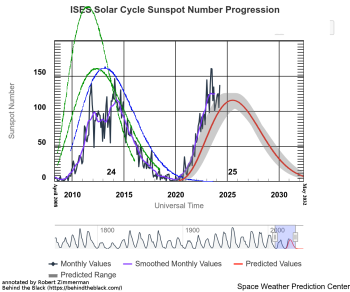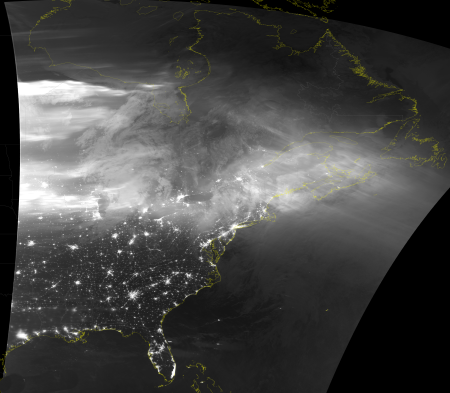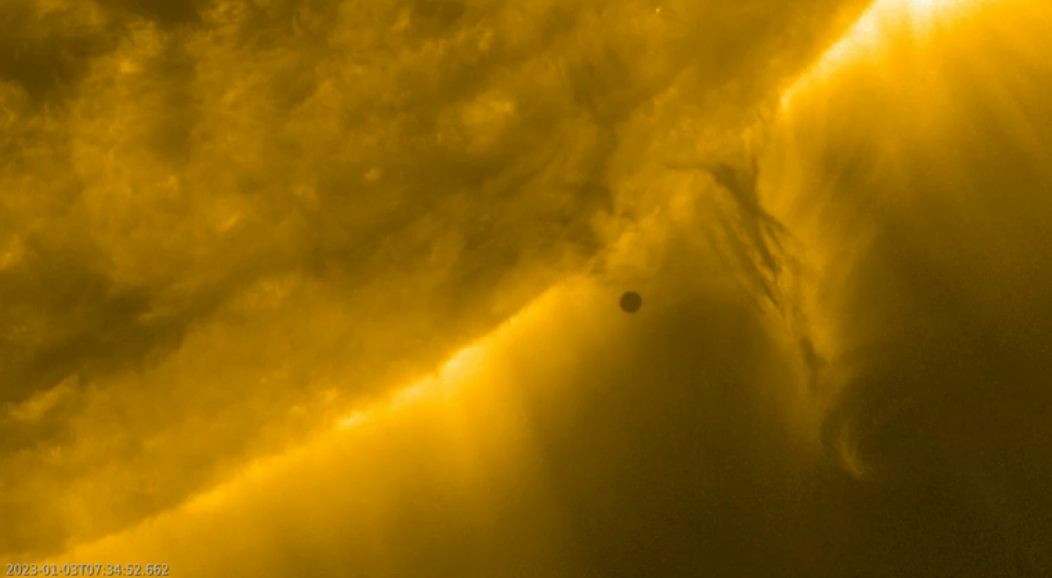Solar storms are simply no longer a threat

The sunspot cycle as of May 2024. Click
for full details.
Today’s Chicken Little Report: When NOAA predicted on May 9, 2024 that a powerful solar flare had erupted from the Sun and was aiming a major solar storm directly at the Earth, the scientists at the federal government’s Space Weather Prediction Center could not help underlining the disaster potential, and were ably aided by the mainstream press. This CNN report was typical:
“Geomagnetic storms can impact infrastructure in near-Earth orbit and on Earth’s surface, potentially disrupting communications, the electric power grid, navigation, radio and satellite operations,” according to the Space Weather Prediction Center. “(The center) has notified the operators of these systems so they can take protective action.”
The center has notified operators in these areas to take action to mitigate the potential for any impacts, which include the possibility of increased and more frequent voltage control problems. Other aspects operators will monitor include a chance of anomalies or impacts to satellite operations and frequent or longer periods of GPS degradation.
And as always, the news report has to end with this warning of doom:
» Read more


